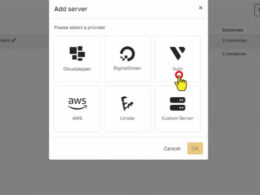A User’s Guide to Creating Google Chrome Extensions

Google Chrome, a widely used web browser worldwide, boasts a wide array of features and functionalities that enrich the user experience. Among these features, the capacity to expand Chrome’s capabilities stands out. Custom extensions offer the flexibility to address individual requirements, potentially improving productivity and entertainment, among other possibilities.
Navigate through this comprehensive tutorial that walks you through the process to create Google Chrome Extension without any coding requirements, serving as a valuable reference for both non-technical users seeking to personalize their browsing experience and developers opting for a code-free method to construct a simple extension.
Why Create a Chrome Extension?
Before delving into the creation process, let’s consider the benefits of developing a Chrome extension:
- Personalization: Enhance your browsing experience by incorporating features and functionalities that cater to your specific needs.
- Efficiency: Seamlessly integrate productivity tools like to-do lists, note-takers, or email notifiers directly into your browser.
- Entertainment: Enhance your browsing with entertainment extensions like ad-blockers, video downloaders, or social media tools.
- Learning: Extensions can facilitate learning by providing language translation, dictionary lookups, or research tools.
- Security: Some extensions offer security enhancements like password managers or VPNs to keep your online activities safe.
Now, let’s get started with creating your very own Chrome extension, all without writing a single line of code.
Tools for Code-Free Chrome Extension Creation
Creating a Chrome extension without coding is made possible through the use of various tools. Here are some well-liked choices that make the process more straightforward:
- Extore Pro: Streamlining the creation of personalized Chrome extensions, Extore Pro is a user-friendly platform that facilitates the integration of features such as note-taking and to-do lists with ease.
- Kabukin: Kabukin serves as another no-code extension builder, offering a range of templates for different purposes. With Kabukin, you can design extensions for news, weather, or social media feeds.
- Chrome Extension Makers: This browser extension allows non-technical users to develop custom extensions directly from the browser, eliminating the need for coding.
- Extensionizr: Extensionizr is a web-based tool that presents a straightforward interface for crafting Chrome extensions. It provides a variety of templates and configuration options.
Steps to Create a Chrome Extension Without Code
Here’s a step-by-step guide on how to create a Chrome extension without writing any code:
Step 1: Define Your Extension’s Purpose
Before embarking on the process of constructing the extension, it’s crucial to clearly define its purpose. What problem will it solve, or in what way will it enhance your browsing experience?
Step 2: Choose the Right Tool
Select a no-code extension builder that aligns with your extension’s purpose. Consider the features and templates available in the tool to ensure they match your requirements.
Step 3: Customize Your Extension
Use the chosen tool to customize your extension. Add functionalities, configure settings, and personalize the extension’s appearance. Most no-code tools provide a user-friendly interface for these tasks.
Step 4: Test Your Extension
Once your extension is customized, test it to ensure it functions as expected. Make sure it doesn’t interfere with your browsing experience or other extensions.
Step 5: Publish Your Extension
If you’re satisfied with the extension’s performance, you can publish it to the Chrome Web Store. This allows other users to discover and install your extension.
Use Cases for Custom Chrome Extensions
Chrome extensions are versatile and can fulfill various purposes. Consider these common scenarios:
- Efficiency Boost: Create extensions for activities such as to-do lists, note-taking, task management, and time tracking to elevate your productivity.
- Entertainment: Develop ad-blockers, video downloaders, and custom themes to enhance your browsing experience.
- Learning: Build extensions for language translation, dictionary lookups, or research tools to aid in your educational pursuits.
- Social Media: Customize extensions for social media management, allowing you to schedule posts, track engagement, and more.
- Security: Create password managers, VPN access, and ad-blockers to keep your online activities safe and secure.
Conclusion
Crafting a personalized Chrome extension can enhance your browsing experience by introducing tailored features. Although conventional extension development often requires coding, there are now user-friendly tools and platforms that enable you to create Chrome extensions without any coding involved.
Whether you aim to improve productivity, add entertainment, aid in learning, enhance social media management, or boost security, the option to create custom extensions without coding unlocks a realm of possibilities. Feel free to customize your browsing experience and delve into the world of Chrome extensions without the necessity of coding expertise.
- Avoid Spam Calls: Caller ID Apps Like Truecaller - May 19, 2024
- Streamline Data Access with JavaScript’s for-in Loop - May 19, 2024
- Master Your Build: Essential Java Build Tools - May 19, 2024








